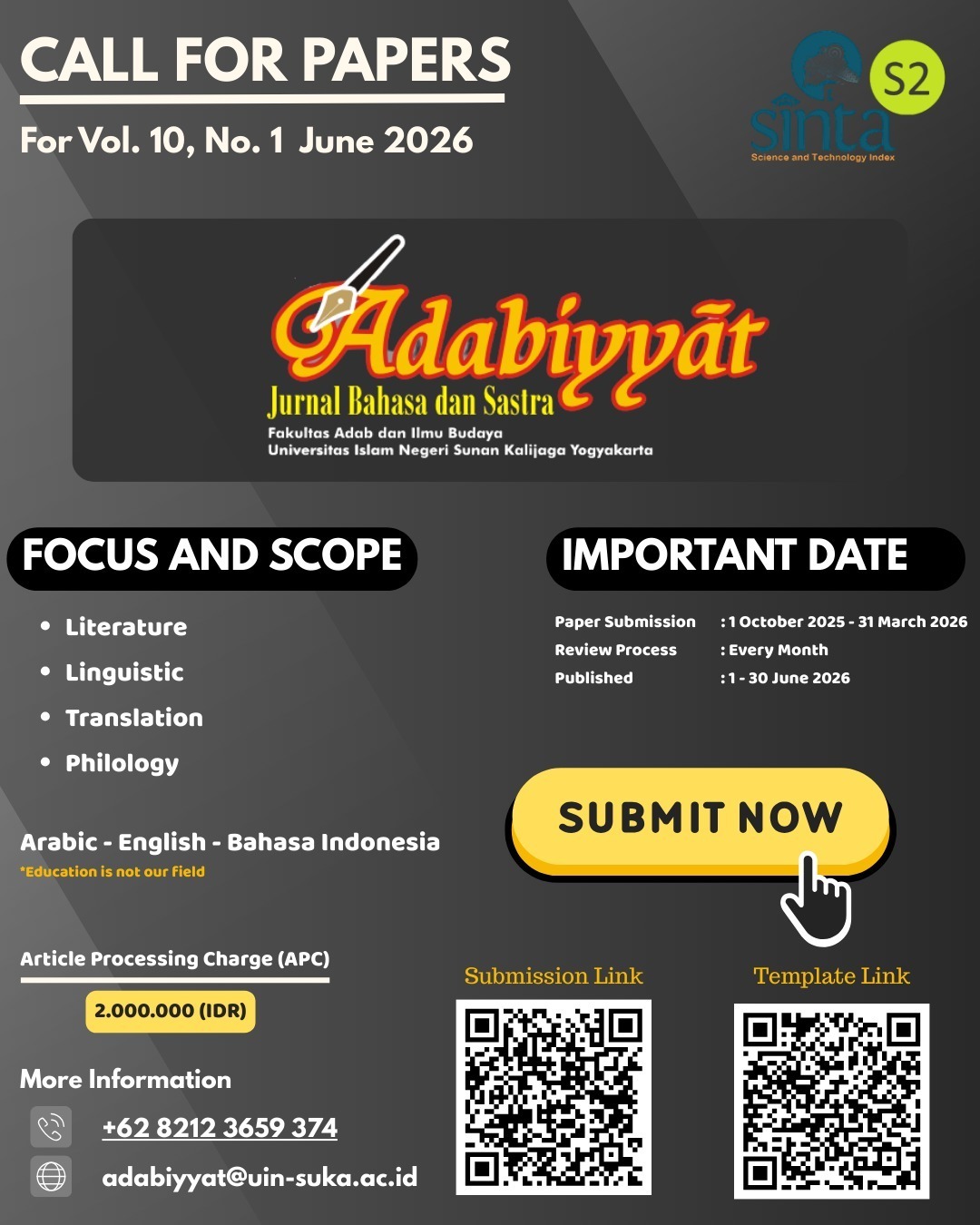MAKNA SIMBOLIK GENDHING PATALON DALAM PERSPEKTIF RELIGIUSITAS ISLAM
DOI:
https://doi.org/10.14421/ajbs.2011.10105Abstract
This research aims to describe gendhing patalon in Wayang (shadow puppet) Purwa related to the context of Islamic teachings. Hermeneutic method and theory are employed to explore this study object. Wayang Purwa is Javanese manifestation of collective reflection and contemplation, tafakur and tadzakur. Wayang Purwa, with its artistic values, has spiritual education or al-tarbiyah al-rabbaniyah and morality concepts or al-akhlaq al-karimah. The dalang (puppet master), wiyaga (gamelan musician) and waranggana (gamelan choir) believe this gendhing was created by Walisanga (the nine Islamic pioneers in Java). Dalang, with his central position in the show of Wayang Purwa ought to teach his audience to do righteous deeds or amal shalih. The sacred Gendhing patalon conveys a religious atmosphere, which gives mystical experiences to its audiences. By seeing the performance, the audience is expected to get the idea of the self essence - rasa jati or makrifat. It is called wikan sangkan paraning dumadi or ‘knowing the highest truth’. Wayang Purwa plays its role for young generation in moral education, character building, and national identity in this global era. Problems of life as well as the nation can be solved by local wisdom approach.
Downloads
References
Bakker. 1978. Manusia dan Simbol. Jakarta: Gramedia.
Ciptoprawiro, Abdullah. 1986. Filsafat Jawa. Jakarta: Balai Pustaka.
Gie, The Liang. 1976. Garis Besar Estetika, Filsafat Keindahan. Yogyakarta: Karya Kencana.
Haryanto. 1992. Bayang-bayang Adiluhung: Filsafat Simbolis dan Mistik dalam Wayang. Semarang: Dahara Prize.
Mulyono, Sri. 1989. Simbolisme dan Mistikisme dalam Wayang. Jakarta: Haji Masagung.
Koentjaraningrat. 1984. Kebudayaan Jawa. Jakarta: Balai Pustaka.
Palgunadi. 2002. Serat Kandha Karawitan Jawi. Bandung: ITB.
Prawiraatmaja. 1978. Bausastra Jawa. Jakarta : Gunung Agung.
Sastroamijoyo, Seno. 1964. Renungan Pertunjukan Wayang Kulit. Jakarta: Kinta.
Simuh. 1988. Mistik Islam Kejawen Raden Ngabehi Ranggawarsita: Suatu Studi terhadap Serat Wirid Hidayat Jati. Jakarta: UI Press.
Solichin. 2011. Falsafah Wayang. Jakarta : Senawangi.
Sulanjari. 2009. Wayang Kulit Gagrak Yogyakarta. Yogyakarta: Pararaton.
Sumanto. 2002. Narto Sabto, Kehadirannya dalam Dunia Pedalangan. Surakarta: STSI Press.
Supadjar, Damardjati. 1993. Nawangsari. Yogyakarta: MW Mandala.
Tarigan, Henry Guntur. 1983. Pengajaran Semantik. Bandung: Angkasa
Waridi. 2004. Perkembangan Gamelan dan Gendhing Pakeliran. Surakarta: Etnika.
Wijanarko. 1990. Mendalami Seni Wayang. Sala: Amigo.
Winter. 1989. Kamus Kawi Jawa. Yogyakarta: Gama Press.
Wojowasito. 1984. Kamus Kawi Indonesia. Ende: Nusa Indah.
Van Luxemburg. 1989. Pengantar I1mu Sastra. Jakarta: Gramedia
Zoetmulder. 1991. Manunggaling Kawula Gusti. Jakarta: Gramedia.
Downloads
Published
Issue
Section
License
- Adabiyyāt: Jurnal Bahasa dan Sastra publishes all articles entirely in full text.
- It is permissible for readers to download and to use it for scientific purposes and scientific dissemination.
- The author can re-publish the article that has been published by the Adabiyyāt: Jurnal Bahasa dan Sastra after obtaining written permission from the editor. This letter can be obtained by submitting a request letter for permission to republish the article to Adabiyyāt: Jurnal Bahasa dan Sastra via email adabiyyat@uin-suka.ac.id. In the second publication, the author is required to include information that the article was firstly published by the Adabiyyāt: Jurnal Bahasa dan Sastra.









